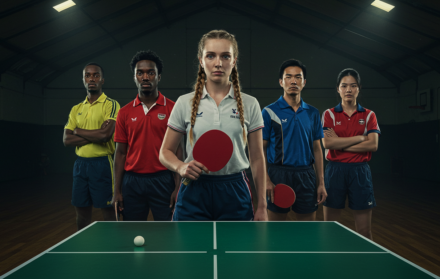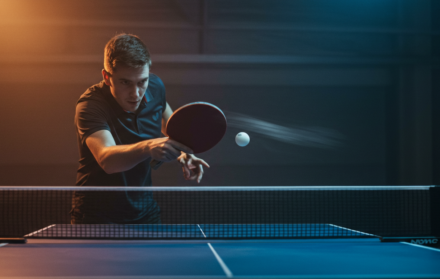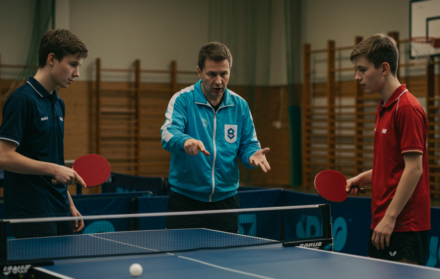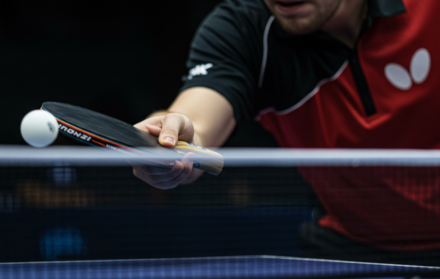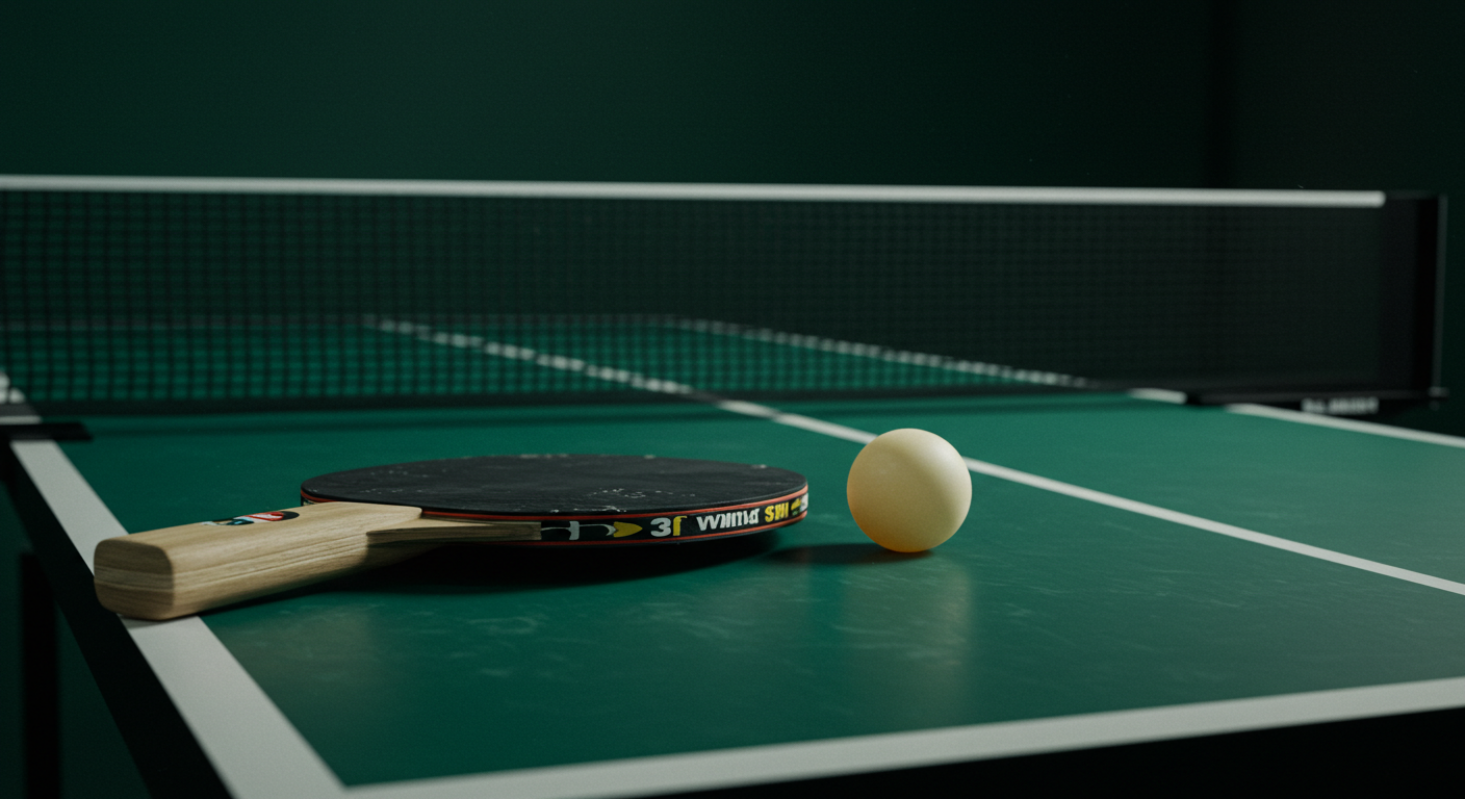
What is table tennis and how is it played?
Table tennis, also known as ping pong, is a fast-paced indoor sport enjoyed by millions worldwide. Whether played casually in basements or competitively on the global stage, it’s a game of quick reflexes, smart strategy, and precise control. But what exactly is table tennis, and how is it played?
In this complete guide, we’ll break down everything you need to know — from its origins and equipment to scoring rules, gameplay formats, techniques, and how to get started.
What is Table Tennis?
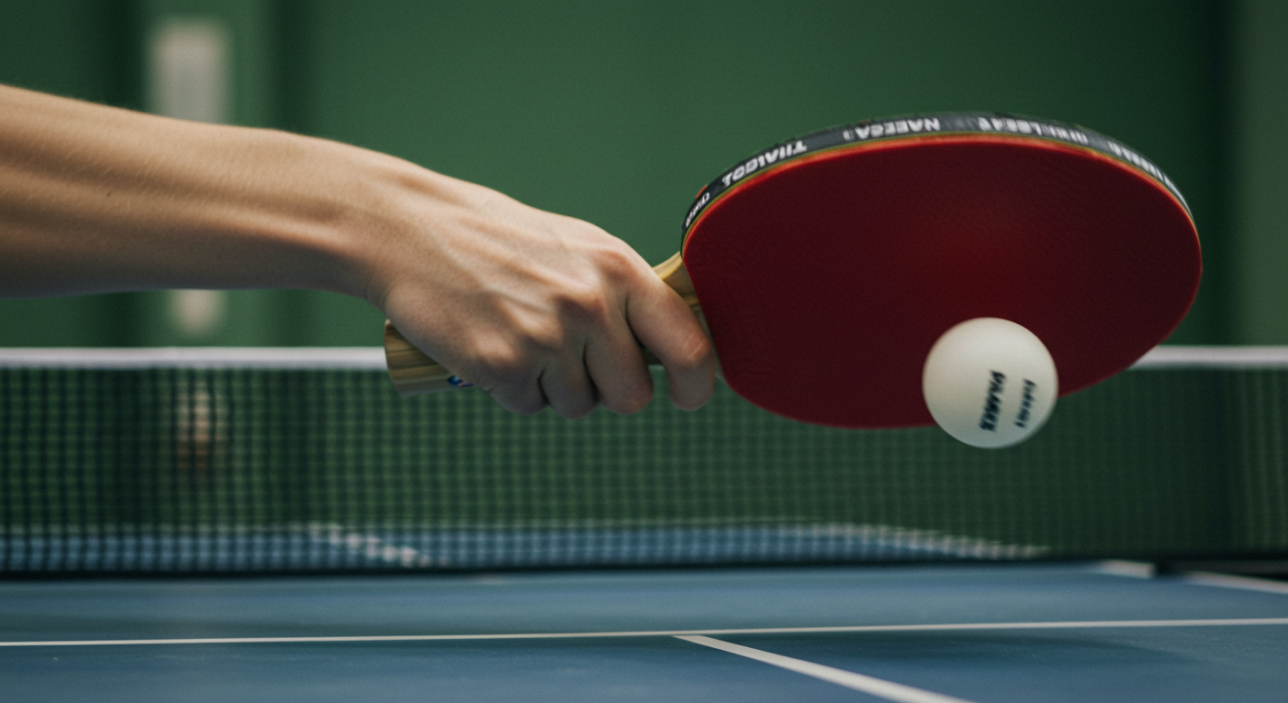
Table tennis is a racket sport played on a rectangular table divided by a net, where players hit a lightweight plastic ball back and forth using paddles (also known as bats or rackets). The goal is to score points by making shots your opponent cannot return, all while following a set of specific rules and regulations.
Unlike tennis, table tennis is played on a much smaller scale but demands intense focus, agility, and timing. Matches can be played in singles (1v1) or doubles (2v2), and games are typically won by the first player or team to reach 11 points (by at least 2 points).
Table Tennis vs Ping Pong: Is There a Difference?
The terms table tennis and ping pong are often used interchangeably, but they do have subtle distinctions:
-
“Table tennis” is the official term used in professional and Olympic settings. It refers to the regulated sport governed by the ITTF (International Table Tennis Federation).
-
“Ping pong” is more casual and recreational. Some equipment brands and social formats (like beer pong spin-offs) also use this term.
In essence, ping pong is table tennis — just less formal. But if you’re learning how to play competitively, “table tennis” is the correct term.
A Brief History of Table Tennis
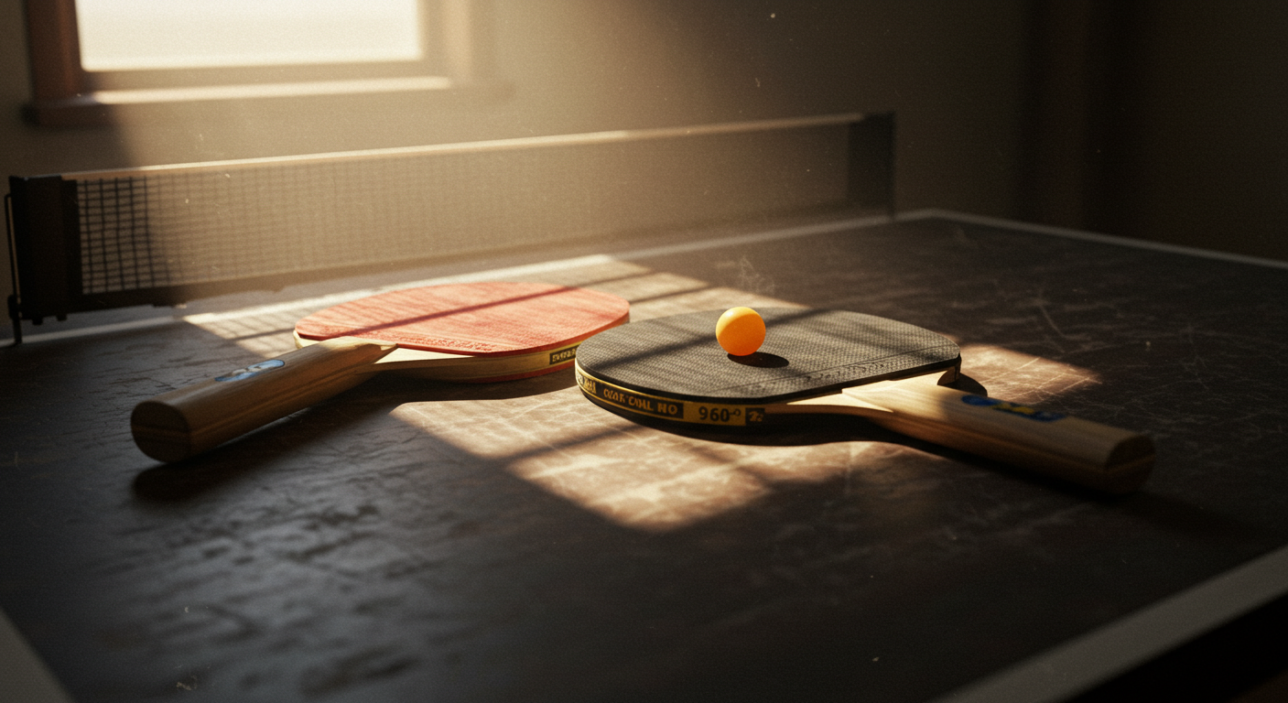
Table tennis originated in the late 19th century in Victorian England as a parlor game. Early versions used books for nets and corks for balls. By the 1920s, standardized rules emerged, and international competitions began to take shape.
Key milestones:
-
1926: The ITTF was founded.
-
1988: Table tennis became an official Olympic sport.
-
2000s–Present: Advanced rubber technology and global participation have evolved the sport dramatically.
Today, countries like China, Japan, South Korea, and Germany dominate competitive table tennis, while the sport continues to grow in popularity worldwide.
Equipment Used in Table Tennis
To play table tennis properly, you’ll need the right gear. Here’s what’s standard in both recreational and competitive play:
1. Table
-
Dimensions: 2.74m long x 1.525m wide x 76cm high
-
Surface: Dark matte finish, usually green or blue
-
Line Markings: White lines along the edges, and a center line for doubles matches
2. Net
-
A 15.25cm high net stretches across the width of the table, dividing it into two equal courts.
3. Ball
-
Material: Celluloid or plastic
-
Size: 40mm diameter
-
Weight: 2.7g
-
Color: White or orange, depending on the playing surface and visibility
4. Bat (Racket or Paddle)
-
Made of wood and covered in rubber
-
One side red, one side black
-
Different rubbers offer different effects (spin, speed, control)
Optional but helpful:
-
Grippy table tennis shoes
-
Sweatbands or wrist guards
-
Bat cases and ball carriers
Table Tennis Rules and Scoring System
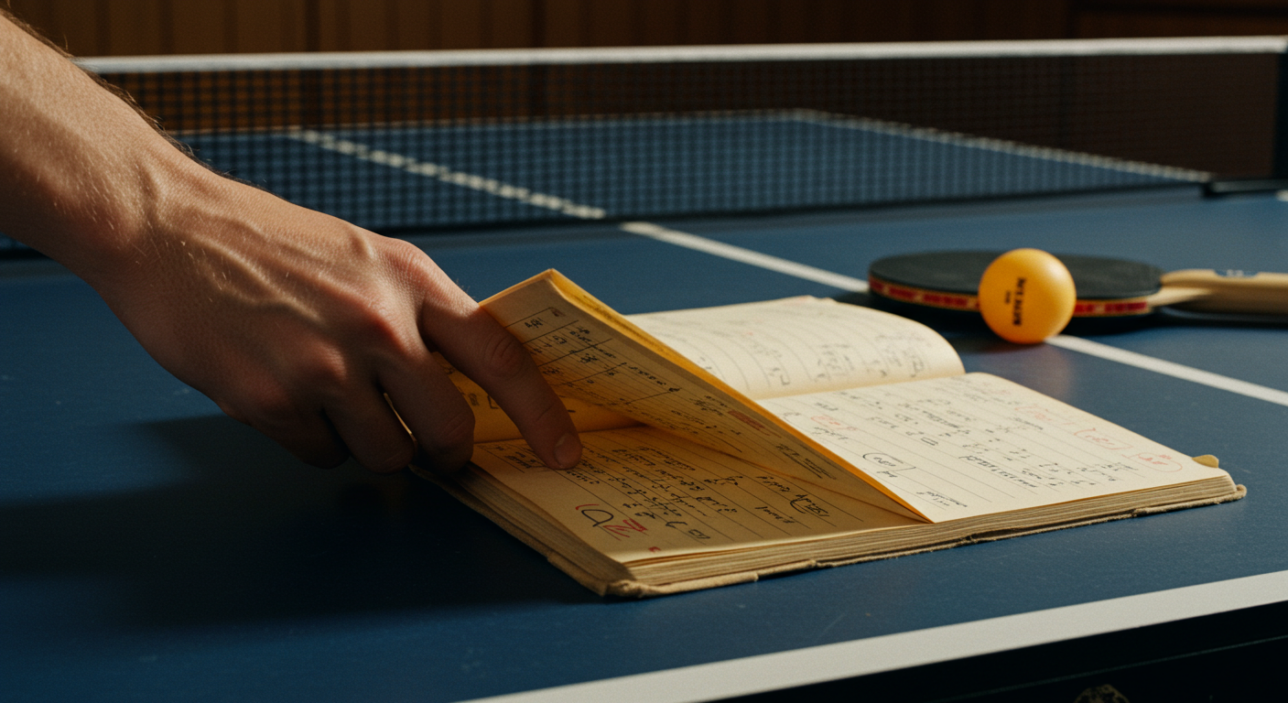
If you’re wondering how table tennis is played, understanding the rules is crucial. Here are the basics:
Match Format
-
Matches are typically played in a best of 5 or 7 games.
-
Each game is played to 11 points, but a player must win by at least 2 points.
-
Players switch serves every 2 points.
Serving Rules
-
The ball must be tossed at least 16cm (6 inches) upward from an open palm.
-
The ball must first bounce on the server’s side, then over the net onto the opponent’s side.
-
In doubles, serves must go diagonally.
Let Serve
-
If the ball hits the net but lands properly on the opponent’s side, it’s a let serve and is re-served.
Point is Won When:
-
The opponent fails to make a legal return
-
The ball bounces twice on their side
-
They hit the net or miss the table
-
A serve is illegal
Change of Ends
-
Players switch sides after each game
-
In the final game, they also switch ends after one player reaches 5 points
How a Table Tennis Match Is Played
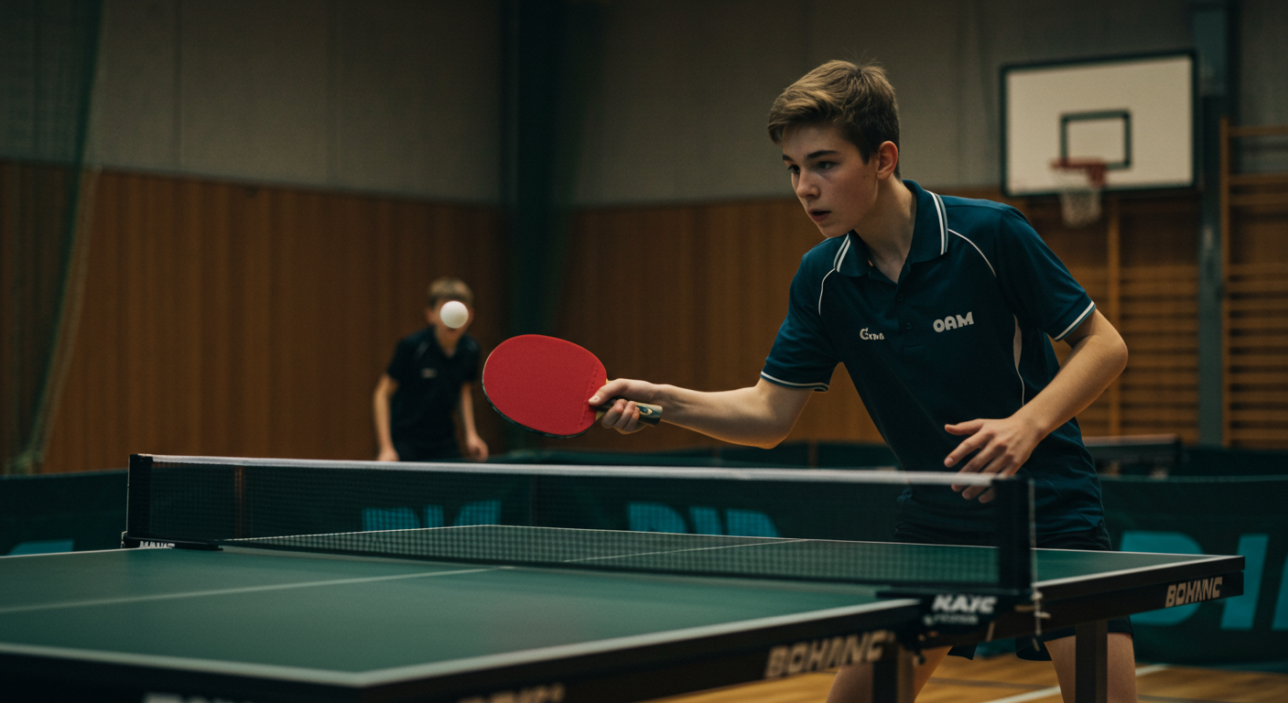
Here’s a quick breakdown of how a typical game of table tennis flows:
-
Serve: Player A tosses and serves the ball legally.
-
Rally: Players alternate hitting the ball after one bounce on their side.
-
Point Scored: Play continues until a fault occurs.
-
Alternate Serve: After every two points, the serve changes hands.
-
Win Condition: First to 11 points with a two-point margin wins the game.
In competitive matches, this continues until a player or team wins the best-of set (e.g., 3 out of 5 games).
Techniques and Playing Styles
Table tennis might look simple at first, but there’s an incredible amount of strategy behind it. Here are some core techniques and playing styles:
Basic Shots
-
Forehand Drive: Offensive stroke using the front of the paddle
-
Backhand Drive: Defensive or neutral return from the opposite side
-
Push: Gentle stroke that applies backspin
-
Topspin: Aggressive spin that arcs the ball downward
-
Smash: Powerful shot used to finish a point
Grips
-
Shakehand Grip: Common among Western players; resembles a handshake
-
Penhold Grip: Popular in Asia; paddle is held like a pen for faster wrist action
Playing Styles
-
Attacker: Focuses on fast, aggressive strokes and smashes
-
Defender: Returns every shot with control and spin
-
All-Rounder: Mixes offense and defense based on the opponent’s weaknesses
Understanding your own playing style — and your opponent’s — is key to mastering table tennis.
Common Table Tennis Terms Explained

Here are a few terms you’ll hear often:
-
Rally: The series of shots after the serve
-
Loop: A heavy topspin stroke
-
Chop: A defensive backspin stroke
-
Let: A point or serve that must be replayed
-
Paddle/Bat: Interchangeable terms for the racket
-
Edge Ball: When the ball clips the table’s edge — legal, but hard to return
Benefits of Playing Table Tennis
Beyond the fun, table tennis offers real physical and mental benefits:
-
Improves Reflexes: Reaction times are everything
-
Boosts Mental Sharpness: Strategic play and quick thinking
-
Great for Cardio: Especially during intense rallies
-
Low-Impact Exercise: Gentle on joints compared to other sports
-
Social and Inclusive: Easy to learn and enjoy at all skill levels
It’s also one of the few sports where age and fitness levels don’t create huge barriers. You can play at any stage of life.
Getting Started: Tips for Beginners
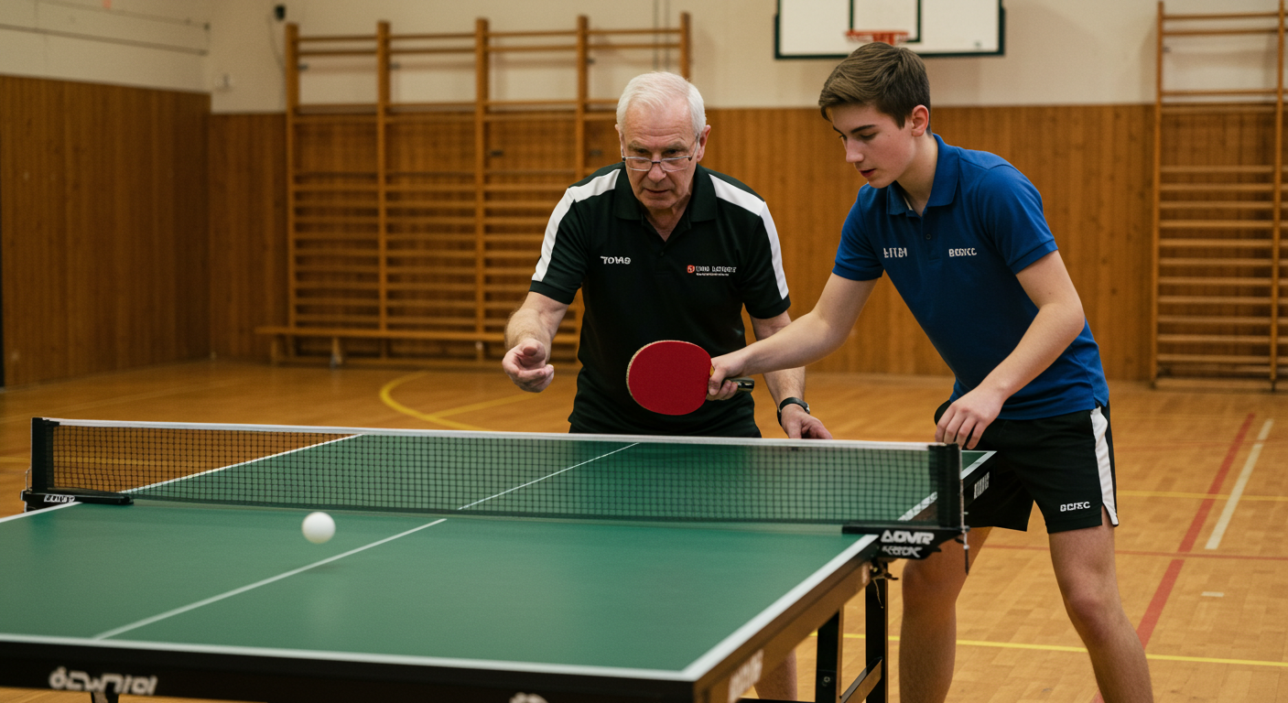
Ready to play? Here’s how to start without feeling overwhelmed:
-
Learn the Rules: Focus on the basic serve and rally rules
-
Choose the Right Equipment: Use a beginner-friendly paddle with good control
-
Practice Regularly: Even 20 minutes a day can improve your timing
-
Watch Others Play: Study footwork and shot technique online
-
Join a Local Club: Playing with others accelerates your skill level
And most importantly — don’t be afraid to lose. Every game is a chance to improve.
Final Thoughts
So, what is table tennis and how is it played? It’s more than just a fun pastime — it’s a precise, energetic, and global sport that combines physical skill with mental agility. Whether you’re picking up a paddle for the first time or leveling up for competition, table tennis offers something for everyone.
Stay tuned for more guides on advanced techniques, buying the best bats, and finding top clubs near you.
FAQs: People Also Ask
1. Is table tennis easy to learn?
Yes. The basic rules and movements are easy to grasp, but mastering the spin, footwork, and strategy takes time.
2. What’s the difference between singles and doubles in table tennis?
Singles is one-on-one, while doubles involves teams of two. In doubles, players must alternate shots and serve diagonally.
3. Can I play table tennis at home?
Absolutely. Many foldable or compact tables are made for home use, and some even attach to dining tables.
4. What is a legal serve in table tennis?
A legal serve must begin behind the table, with the ball tossed upward and struck so it bounces once on each side.
5. Is table tennis an Olympic sport?
Yes. Table tennis has been an Olympic sport since 1988 and features singles and team events for men and women.
